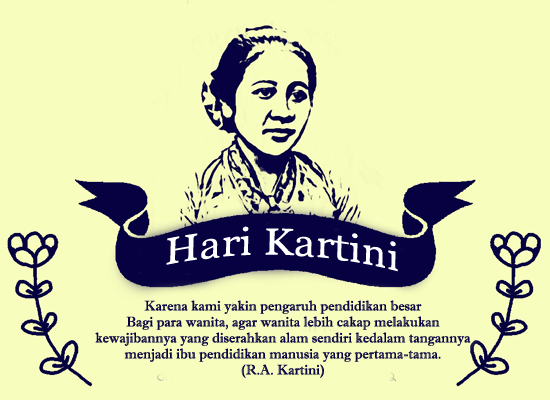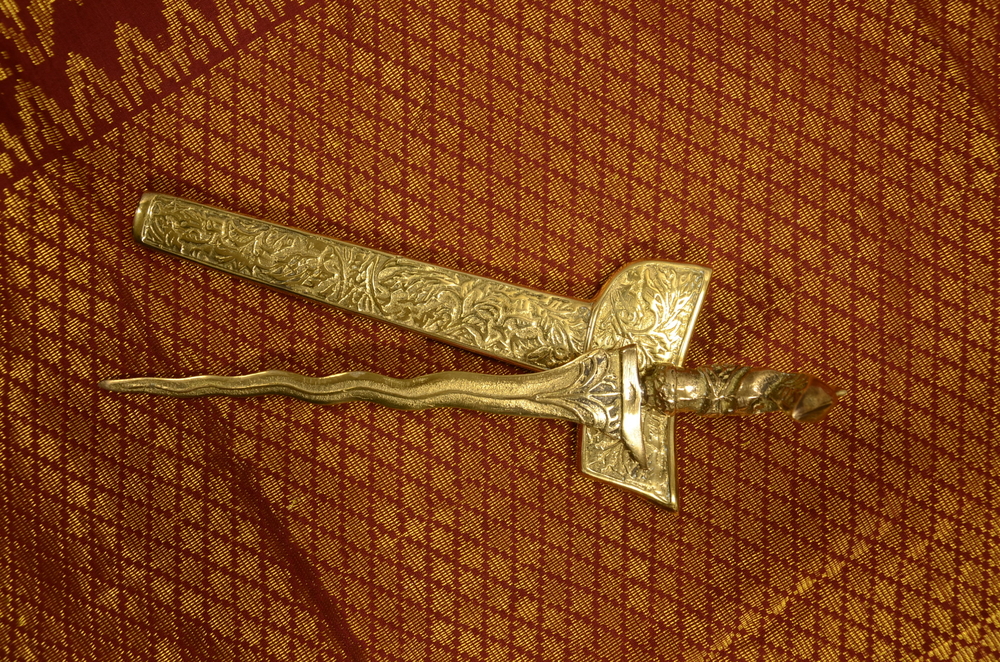
Not merely an accessory that is worn by the Javanese groom, Keris or Kris is the most famous pusaka (heirloom) for Javanese people.
A keris is a special knife, a double-edged asymmetrical stabbing weapon originating in Java which is used in a close range combat. From a stabbing weapon, it has developed into a social status symbol and a symbol of manhood. According to Javanese keris lore, the development of keris can be assumed to take a parallel course with the kingdoms of Java.
Keris are not only found in Indonesia, but also indigenous to Malaysia, Thailand, Brunei, Singapore and the Philippines where it is known as kalis with variants existing as a sword rather than a dagger. Kris also have been produced in many regions of Indonesia for centuries, but nowhere is the kris so embedded in a mutually-connected whole of ritual prescriptions and acts, ceremonies, mythical backgrounds and epic poetry as in Java.
Both a weapon and spiritual object, keris are often considered to have an essence or presence, considered to possess magical powers, with some blades possessing good luck and others possessing bad. Legendary keris that possess supernatural power and extraordinary ability were mentioned in Indonesian traditional folktales, such as those of Empu Gandring, Taming Sari, and Setan Kober.
Parts of Keris
Keris has two kinds of shape: straight keris and meandering keris. There are approximately 200 kinds of straight keris and 250 kinds of meandering keris.
In general, keris can be divided into three parts: blade (bilah or wilah), hilt (hulu), and sheath (warangka):
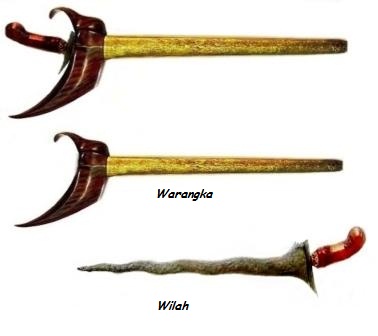
- Blades or wilah are usually narrow with a wide, asymmetrical base. Keris is famous for its wavy blade; although the older types of keris dated from the Majapahit era have straight blades. The number of curves on the blade (known as luk) is always odd, varied from luk 3 up to luk 29.
- Pamor’s patterns have specific meanings and names which indicate the mythical properties they are believed to impart. There are around 60 variants of pamor recognized today in traditional keris blades.
- The handle or hilt (hulu) is an object of art, often carved in meticulous details and made from various materials: precious rare types of wood to gold or ivory. They were often carved to resemble various animals and Hindu deities, although this became less common with the introduction of Islam.
- A keris’s sheath can be made from various materials, usually a wooden frame to hold the blade which can be coated with metals such as brass, iron, silver, or gold. The upper part of the sheath formed a broad curved handle made from wood or sometimes ivory.
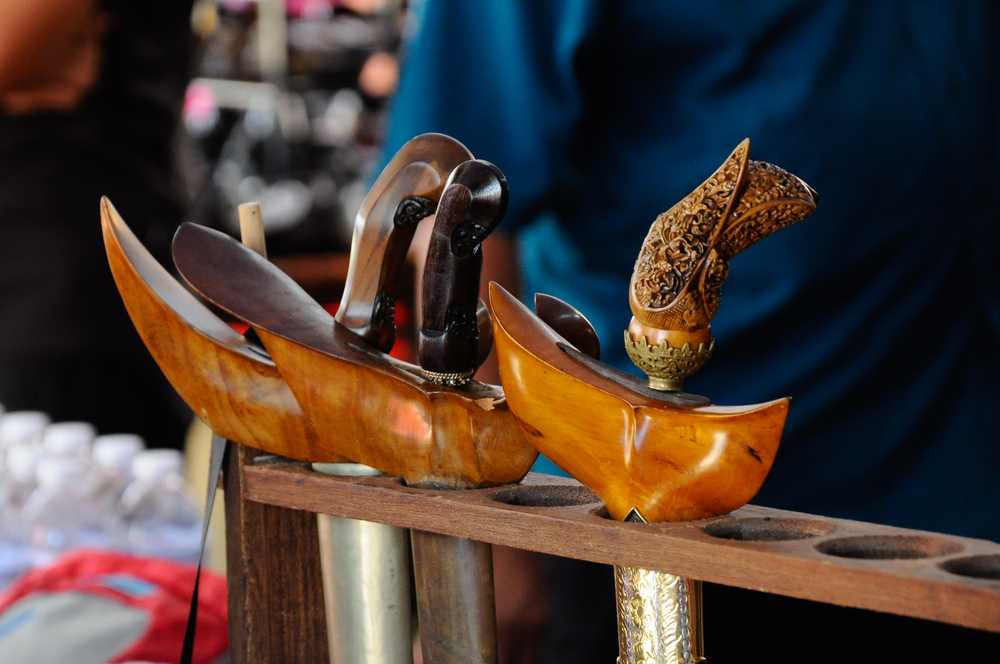
Cultural beliefs
In Javanese culture, keris is revered as tosan aji (Javanese for “sacred heirloom weapon”) and considered a pusaka. The pusaka keris given by a Javanese king to nobles or his subjects, was meant to symbolize the king’s confidence bestowed upon the receiver and is considered a great honor.
During a Javanese wedding ceremony, a keris is required to be adorned with chains of jasmine flower arrangement as an important part of Javanese groom’s wedding costume. The jasmine arrangement has a special meaning: it is a symbol that a man should not easily be angry, cruel, fierce, too aggressive, tyrannical and abusive.
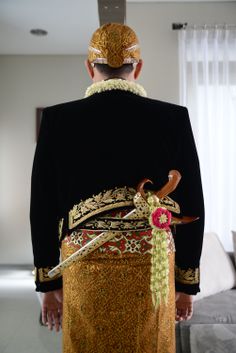
Some keris has been constructed entirely for magic and spiritual purposes. The creation is complicated magical ritual which involves the blending of the metal with magical ingredients and the invoking of powerful jinn spirit into keris. After keris has been created, the spirit is continuously fed in order to make it more powerful.
The different powers a keris possesses are reflected on the different ways of using it. Some kerises are more suitable for experienced magicians, and like to be held in rituals, in which case they will add great power to the ritual. Some are easier to be used by beginners: you only need to visualize your desire and the jinn will work on fulfilling that desire. Others were created as family protectors, and can be used with no magical knowledge at all.
Kerises should be hung on the wall and fed once a month. They will work quietly behind you, protecting you from harm, or drawing in wealth and good luck. There are some that can be carried on the person to confer authority on the carrier.


